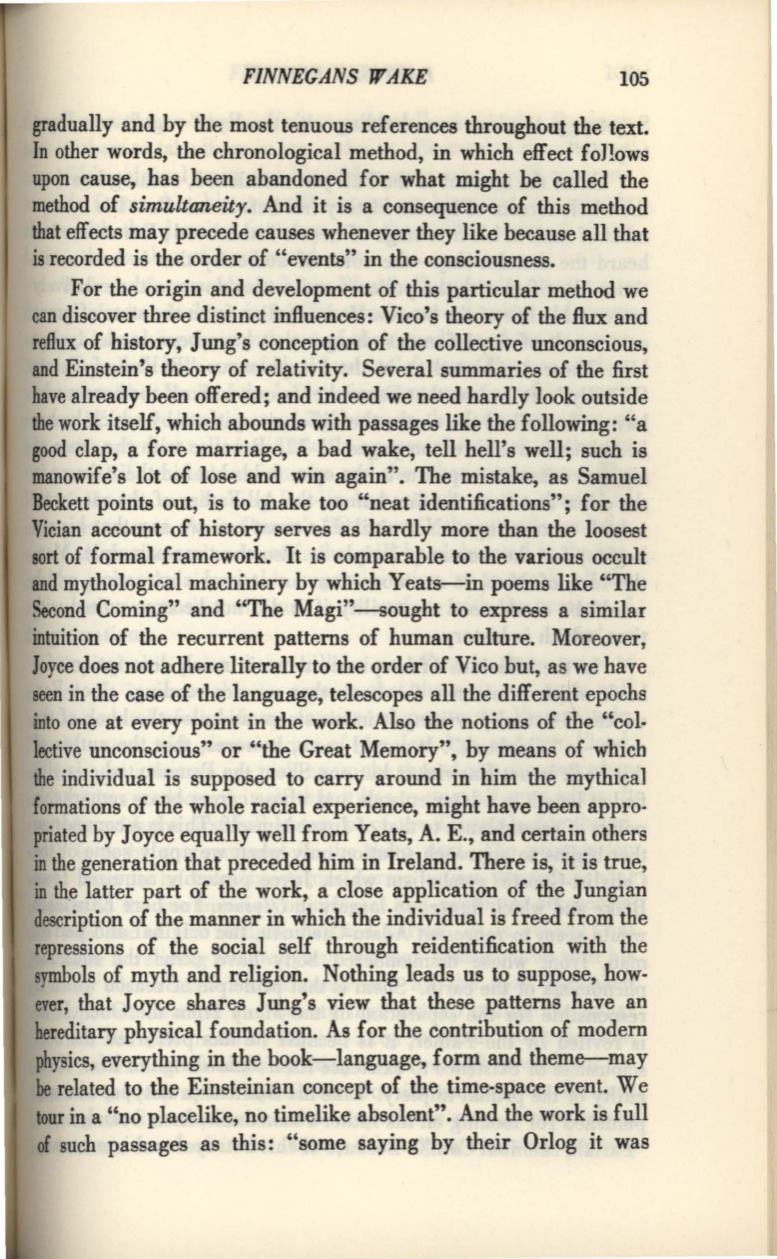
FINNEGANS WAKE
105
gradually and by the most tenuous references throughout the text.
In
other words, the chronological method, in which effect foJlows
upon cause, has been abandoned for what might be called the
method of
simultaneity.
And it is a consequence of this method
that effects may precede causes whenever they like because all that
is
recorded is the order of "events" in the consciousness.
For the origin and development of this particular method we
can discover three distinct influences: Vico's theory of the flux and
reflux
of history, Jung's conception of the collective unconscious,
and Einstein's theory of relativity. Several summaries of the first
have already been offered; and indeed we need hardly look outside
the work itself, which abounds with passages like the following: "a
good
clap, a fore marriage, a bad wake, tell hell's well; such is
manowife's lot of lose and win again". The mistake, as Samuel
Beckett points out, is to make too "neat identifications"; for the
Vician account of history serves as hardly more than the loosest
10rt
of formal framework. It is comparable to the various occult
and mythological machinery by which Yeats-in poems like "The
Second Coming" and "The Magi"-sought to express a similar
intuition of the recurrent patterns of human culture. Moreover,
Joyce does not adhere literally to the order of Vico but, as we have
seen in the case of the language, telescopes all the different epochs
into one at every point in the work. Also the notions of the "col–
lective unconscious" or "the Great Memory", by means of which
the individual is supposed to carry around in him the mythical
formations of the whole racial experience, might have been appro–
priated by Joyce equally well from Yeats, A. E., and certain others
in
the generation that preceded him in Ireland. There is, it is true,
in
the latter part of the work, a close application of the Jungian
description of the manner in which the individual is freed from the
repressions of the social self through reidentification with the
symbols of myth and religion. Nothing leads us to suppose, how–
ever, that Joyce shares Jung's view that these patterns have an
hereditary physical foundation. As for the contribution of modern
physics, everything in the book-language, form and theme--may
be
related to the Einsteinian concept of the time-space event. We
tour
in a "no placelike, no timelike absolent". And the work is full
of
such passages as this: "some saying by their Orlog it was


